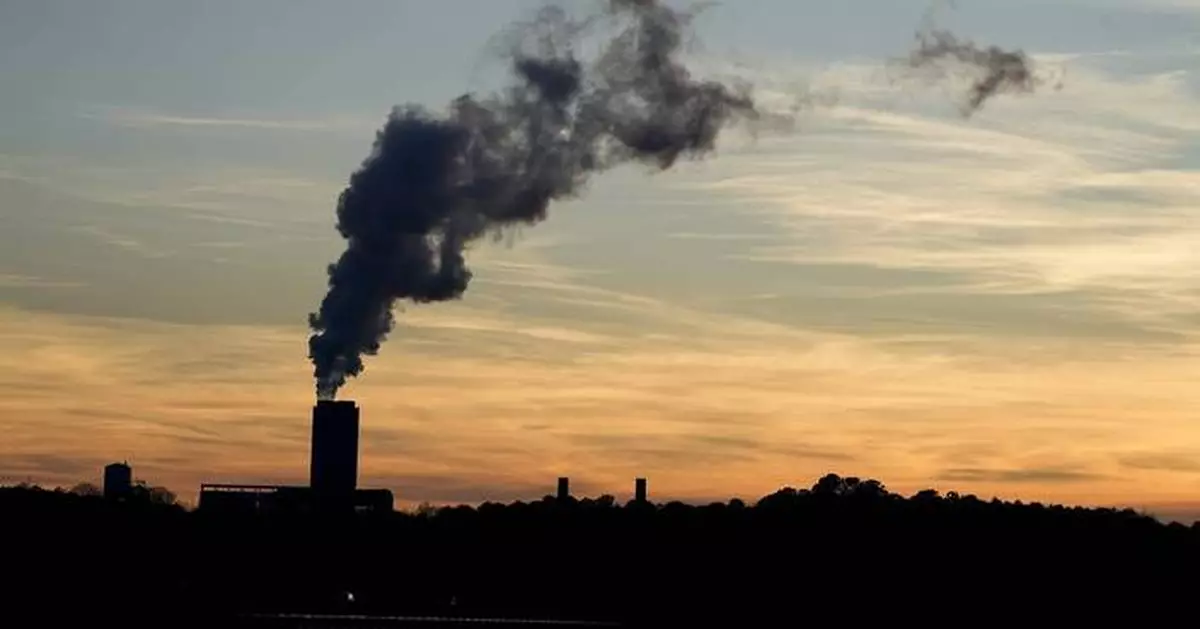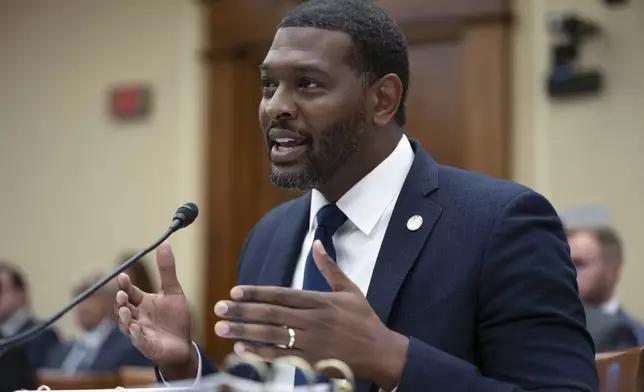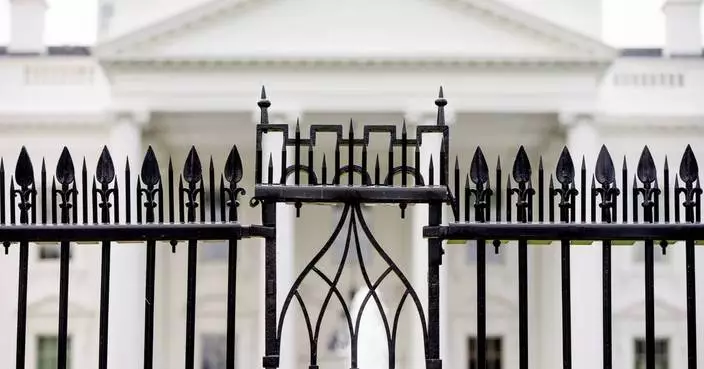WASHINGTON (AP) — Coal-fired power plants would be forced to capture smokestack emissions or shut down under a rule issued Thursday by the Environmental Protection Agency.
New limits on greenhouse gas emissions from fossil fuel-fired electric plants are the Biden administration's most ambitious effort yet to roll back planet-warming pollution from the power sector, the nation’s second-largest contributor to climate change. The rules are a key part of President Joe Biden's pledge to eliminate carbon pollution from the electricity sector by 2035 and economy-wide by 2050.
The rule was among four measures targeting coal and natural gas plants that the EPA said would provide “regulatory certainty” to the power industry and encourage them to make investments to transition “to a clean energy economy.” The measures include requirements to reduce toxic wastewater pollutants from coal-fired plants and to safely manage coal ash in unlined storage ponds.
EPA Administrator Michael Regan said the rules will reduce pollution and improve public health while supporting the reliable, long-term supply of electricity that America needs.
“One of the biggest environmental challenges facing our nation is man-made pollution that damages our air, our water and our land," Regan said in a speech at Howard University. “Not only is this pollution a major threat to public health — it’s pushing our planet to the brink.''
Regan called the power plant rules “a defining moment” for his agency as it works to "build a cleaner and healthier future for all of us.''
The plan is likely to be challenged by industry groups and Republican-leaning states. They have repeatedly accused the Democratic administration of overreach on environmental regulations and have warned of a looming reliability crisis for the electric grid. The rules issued Thursday are among at least a half-dozen EPA rules limiting power plant emissions and wastewater pollution.
Environmental groups hailed the EPA’s latest action as urgently needed to protect against the devastating harms of climate change.
The power plant rule marks the first time the federal government has restricted carbon dioxide emissions from existing coal-fired power plants. The rule also would force future electric plants fueled by coal or gas to control up to 90% of their carbon pollution. The new standards will avoid 1.38 billion metric tons of carbon pollution through 2047, equivalent to the annual emissions of 328 million gas cars, the EPA said, and will provide hundreds of billions of dollars in climate and health benefits, measured in fewer premature deaths, asthma cases and lost work or school days.
Coal plants that plan to stay open beyond 2039 would have to cut or capture 90% of their carbon dioxide emissions by 2032, the EPA said. Plants that expect to retire by 2039 would face a less stringent standard but still would have to capture some emissions. Coal plants that are set to retire by 2032 would not be subject to the new rules.
Rich Nolan, president and CEO of the National Mining Association, said that through the latest rules, “the EPA is systematically dismantling the reliability of the U.S. electric grid.''
He accused Biden, Regan and other officials of “ignoring our energy reality and forcing the closure of well-operating coal plants that repeatedly come to the rescue during times of peak demand. The repercussions of this reckless plan will be felt across the country by all Americans.”
Regan denied that the rules were aimed at shutting down the coal sector, but he acknowledged in proposing the power plant rule last year that, “We will see some coal retirements.”
The proposal relies on technologies to limit carbon pollution that the industry itself has said are viable and available, Regan said. “Multiple power companies have indicated that (carbon capture and storage) is a viable technology for the power sector today, and they are currently pursuing those CCS projects,'' he told reporters Wednesday.
Coal provided about 16% of U.S. electricity last year, down from about 45% in 2010. Natural gas provides about 43% of U.S. electricity, with the remainder from nuclear energy and renewables such as wind, solar and hydropower.
Dan Brouillette, president and CEO of of the Edison Electric Institute, which represents U.S. investor-owned electric companies, said he was “disappointed" that the EPA “did not address the concerns we raised about carbon capture and storage.'' While promising, the technology "is not yet ready for full-scale, economy-wide deployment,'' said Brouillette, who served as energy secretary in President Donald Trump's administration.
The rules initially included steps to curb emissions from existing natural gas plants, but Regan delayed that aspect of the rules until at least next year, saying he wanted to address complaints from environmental justice groups that the earlier plan allowed too much toxic air pollution that disproportionately harms low-income neighborhoods near power plants, refineries and other industrial sites.
Even so, the rules issued Thursday complete "a historic grand slam” of major actions by the Biden administration to reduce carbon pollution, said David Doniger, a climate and clean energy expert at the Natural Resources Defense Council. The first and most important action was passage of the 2022 climate law, officially known as the Inflation Reduction Act, he said, followed by separate EPA rules targeting tailpipe emissions from cars and trucks and methane emissions from oil and gas drilling.
Together, the climate law and the suite of EPA rules “are the biggest reductions in carbon pollution we've ever made and will put the country on the pathway to zero out carbon emissions,'' Doniger said.
The nation still faces challenges in eliminating carbon from transportation, heavy industry and more, said Abigail Dillen, president of the environmental group Earthjustice, "but we can't make progress on any of it without cleaning up the power plants.''
Jim Matheson, CEO of the National Rural Electric Cooperative Association, called the EPA rule "unlawful, unrealistic and unachievable,” adding that it faced a certain court challenge. The rule disregards the Supreme Court’s 2022 decision that limited the agency’s ability to regulate carbon pollution under the Clean Air Act, Matheson said.
“This barrage of new EPA rules ignores our nation’s ongoing electric reliability challenges and is the wrong approach at a critical time for our nation’s energy future,” said Matheson, whose association represents 900 local electric cooperatives across the country.
The EPA rules would not mandate use of equipment to capture and store carbon emissions — a technology that is expensive and still being developed. Instead, the agency would set caps on carbon dioxide pollution that plant operators would have to meet. Some natural gas plants could start blending gas with other fuel sources that do not emit carbon, although specific actions would be left to the industry.
Still, the regulation is expected to lead to greater use of carbon capture equipment. Only a handful of projects are operating in the country despite years of research.
The EPA also tightened rules aimed at reducing wastewater pollution from coal-fired power plants and preventing harm from toxic pits of coal ash, a waste byproduct of burning coal.
Coal ash contains cancer-causing substances like arsenic and mercury that can leach into the ground, drinking water and nearby rivers and streams, harming people and killing fish. The waste is commonly stored in ponds near power plants. The EPA issued rules in 2015 to regulate active and new ponds at operating facilities, seven years after a disaster in Kingston, Tennessee, that flooded two rivers with toxic waste and destroyed property.
Environmental groups challenged that rule, arguing it left a large amount of coal ash waste unregulated by the federal government. The rule issued Thursday forces owners to safely close inactive coal ash ponds and clean up contamination.
A separate rule will reduce toxic wastewater pollution by 660 million pounds annually, according to federal officials. It’s a reversal of the Republican Trump administration’s push to loosen coal plant wastewater standards.
This story has been corrected to show the Edison Electric Institute CEO’s surname is Brouillette, not Brouilette.
Associated Press writer Michael Phillis in St. Louis contributed to this story.
Follow the AP's coverage of the EPA at https://apnews.com/hub/us-environmental-protection-agency.

Environmental Protection Agency Administrator Michael Regan announces final standards to reduce pollution from power plants during an event at Howard University on Thursday, April 25, 2024, in Washington. (AP Photo/Kevin Wolf)

Environmental Protection Agency Administrator Michael Regan announces final standards to reduce pollution from power plants during an event at Howard University on Thursday, April 25, 2024, in Washington. (AP Photo/Kevin Wolf)

Environmental Protection Agency Administrator Michael Regan announces final standards to reduce pollution from power plants during an event at Howard University on Thursday, April 25, 2024, in Washington. (AP Photo/Kevin Wolf)
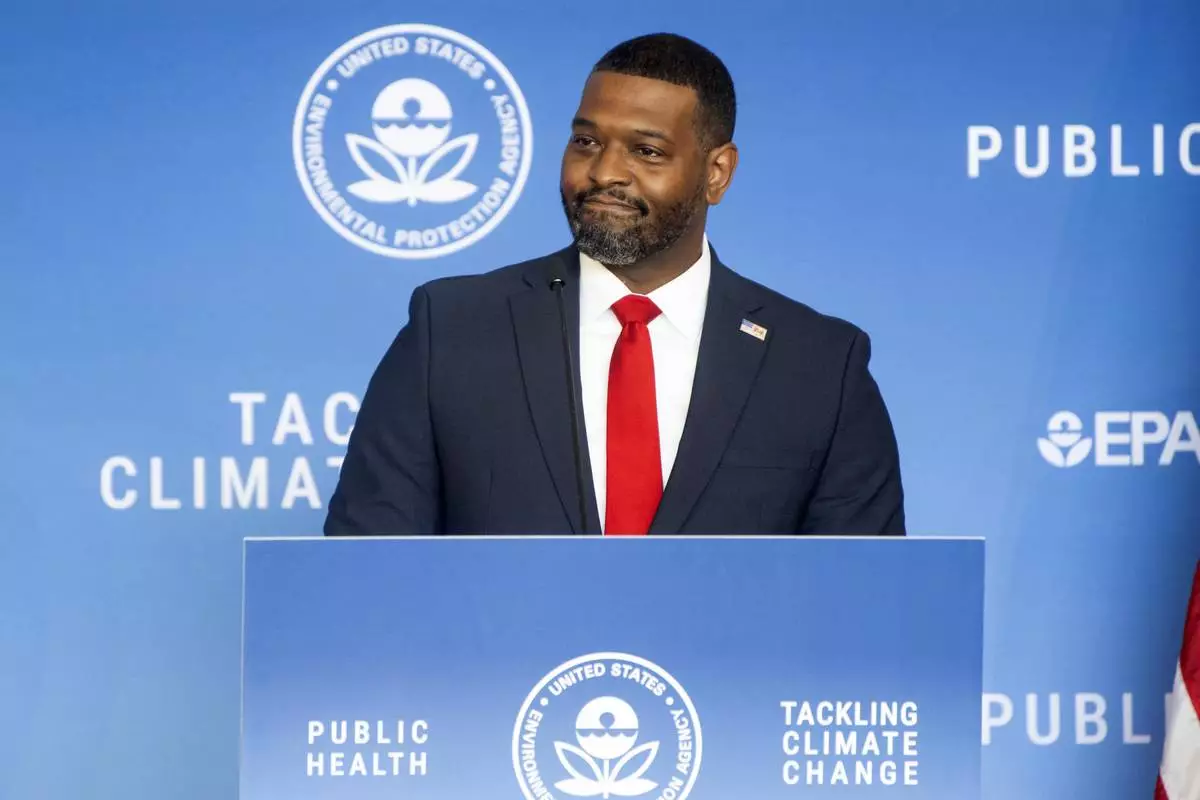
Environmental Protection Agency Administrator Michael Regan announces final standards to reduce pollution from power plants during an event at Howard University on Thursday, April 25, 2024, in Washington. (AP Photo/Kevin Wolf)

FILE - Environmental Protection Agency Administrator Michael Regan speaks during a hearing on Capitol Hill, Sept. 27, 2023, in Washington. A rule issued April 25, 2024, by the EPA would force power plants fueled by coal or natural to capture smokestack emissions or shut down. (AP Photo/Mark Schiefelbein, File)
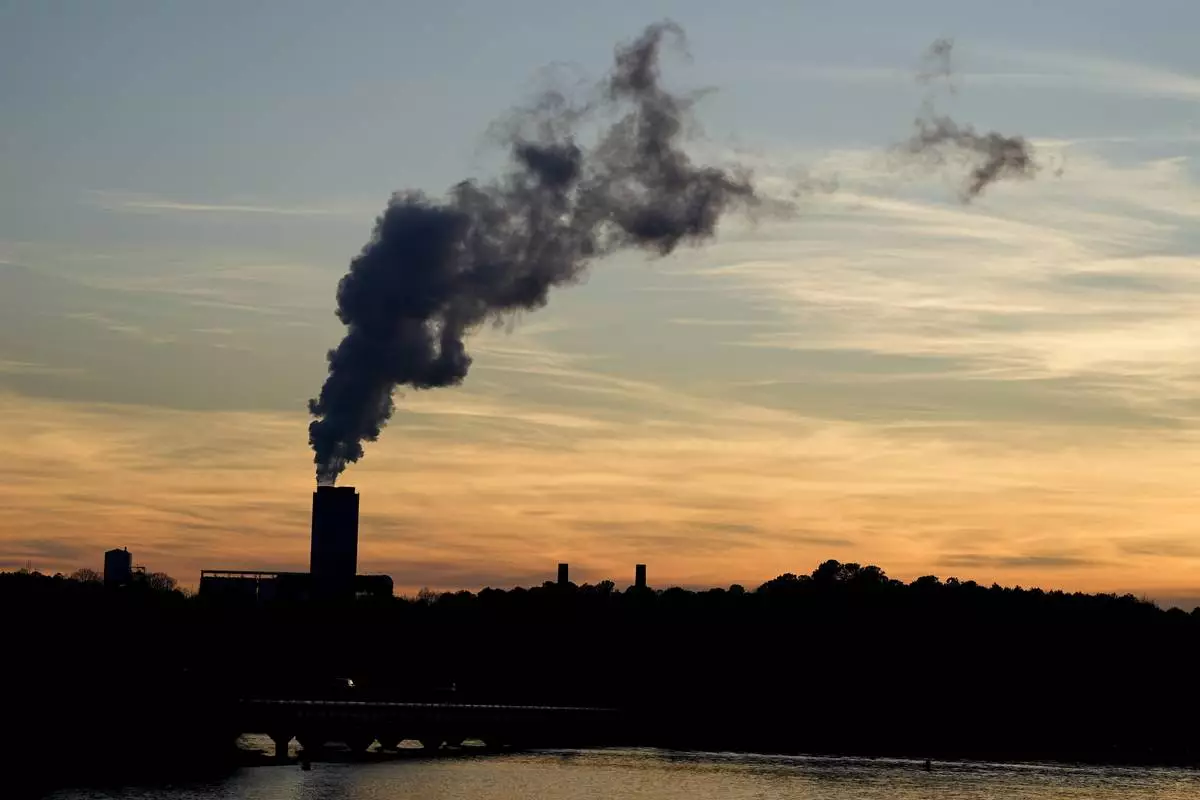
FILE - The Marshall Steam Station coal power plant operates March 3, 2024, near Mooresville, N.C. A rule issued April 24, 2024, by the Environmental Protection Agency would force power plants fueled by coal or natural to capture smokestack emissions or shut down. (AP Photo/Chris Carlson, File)


